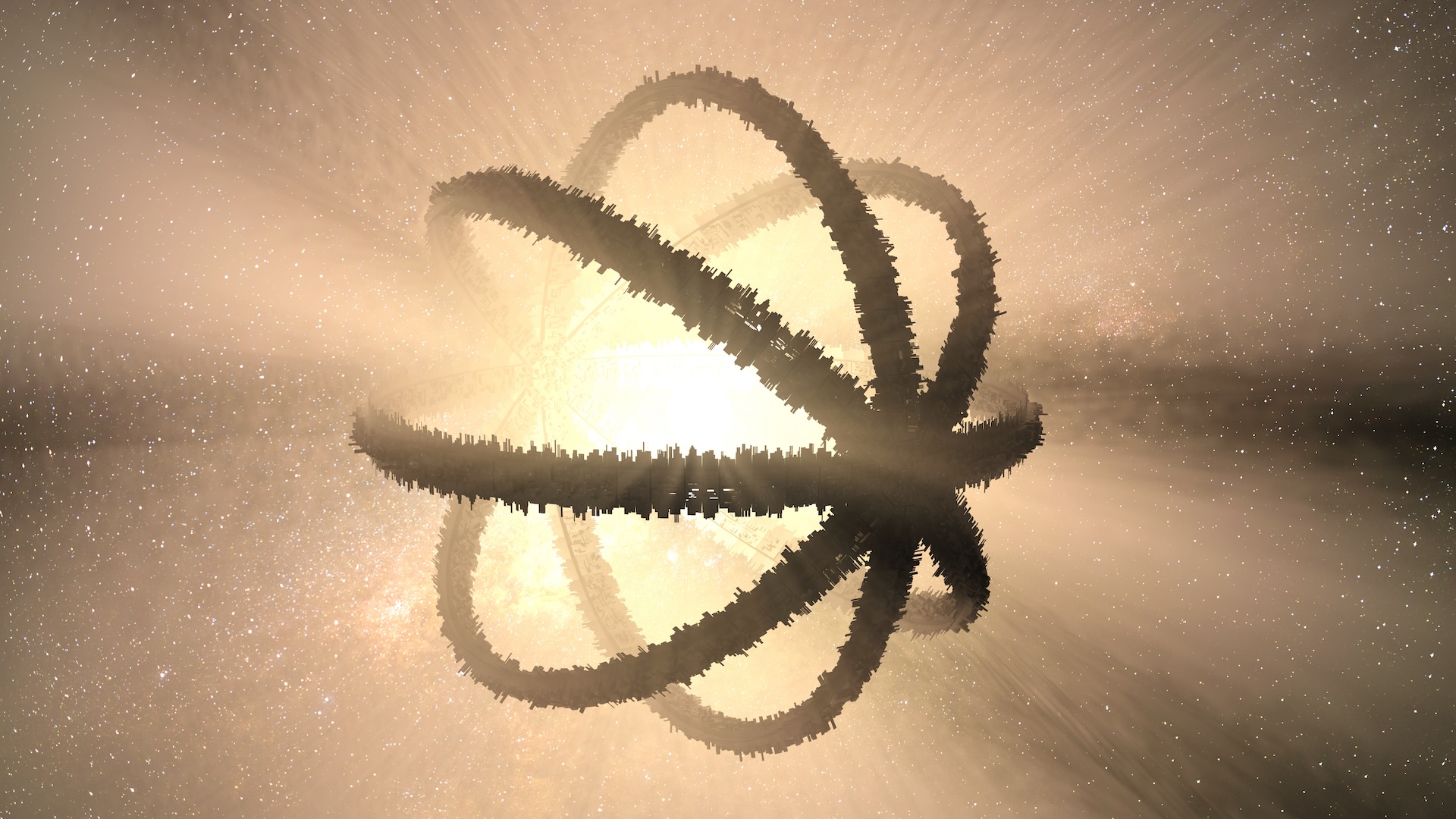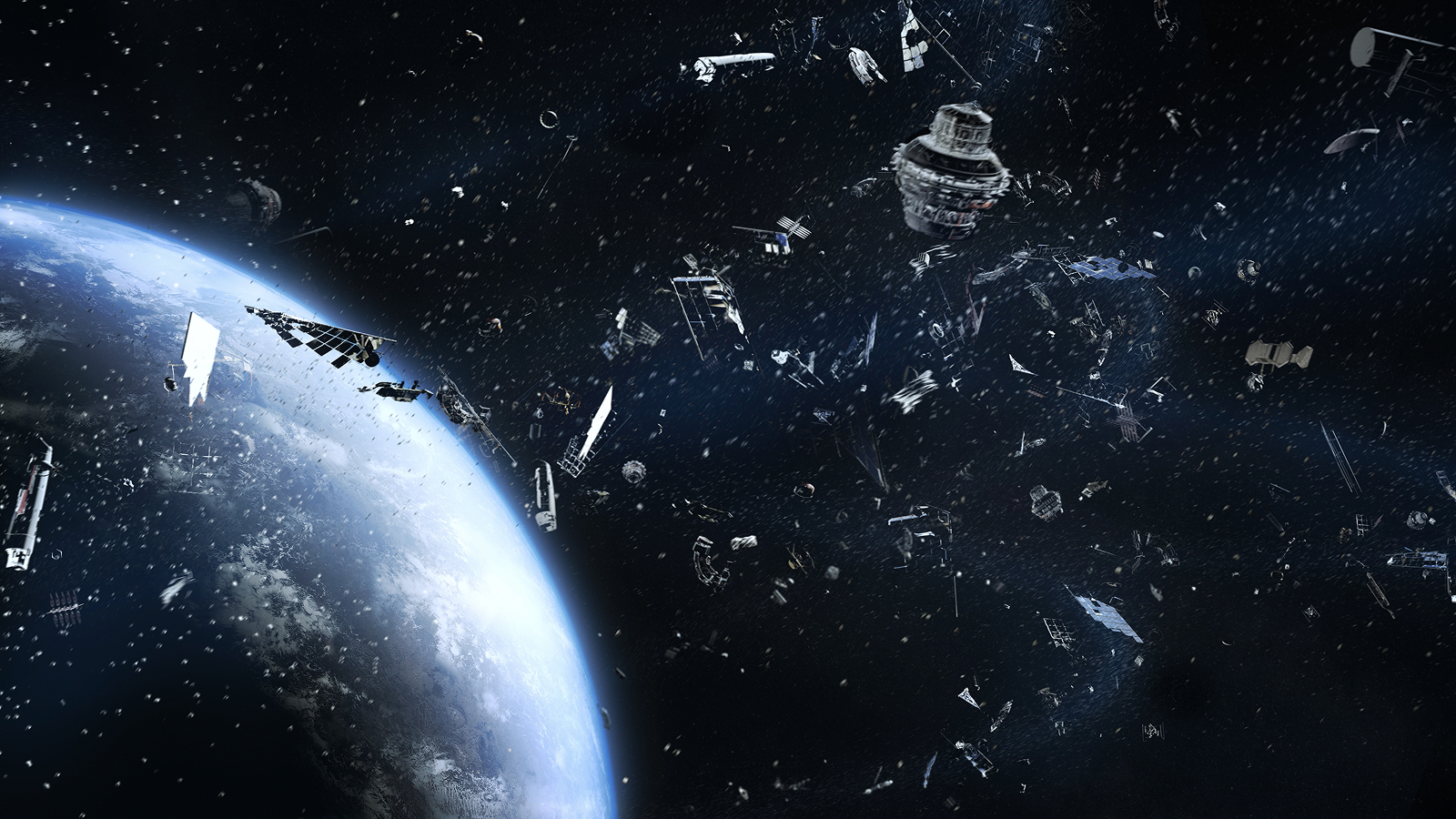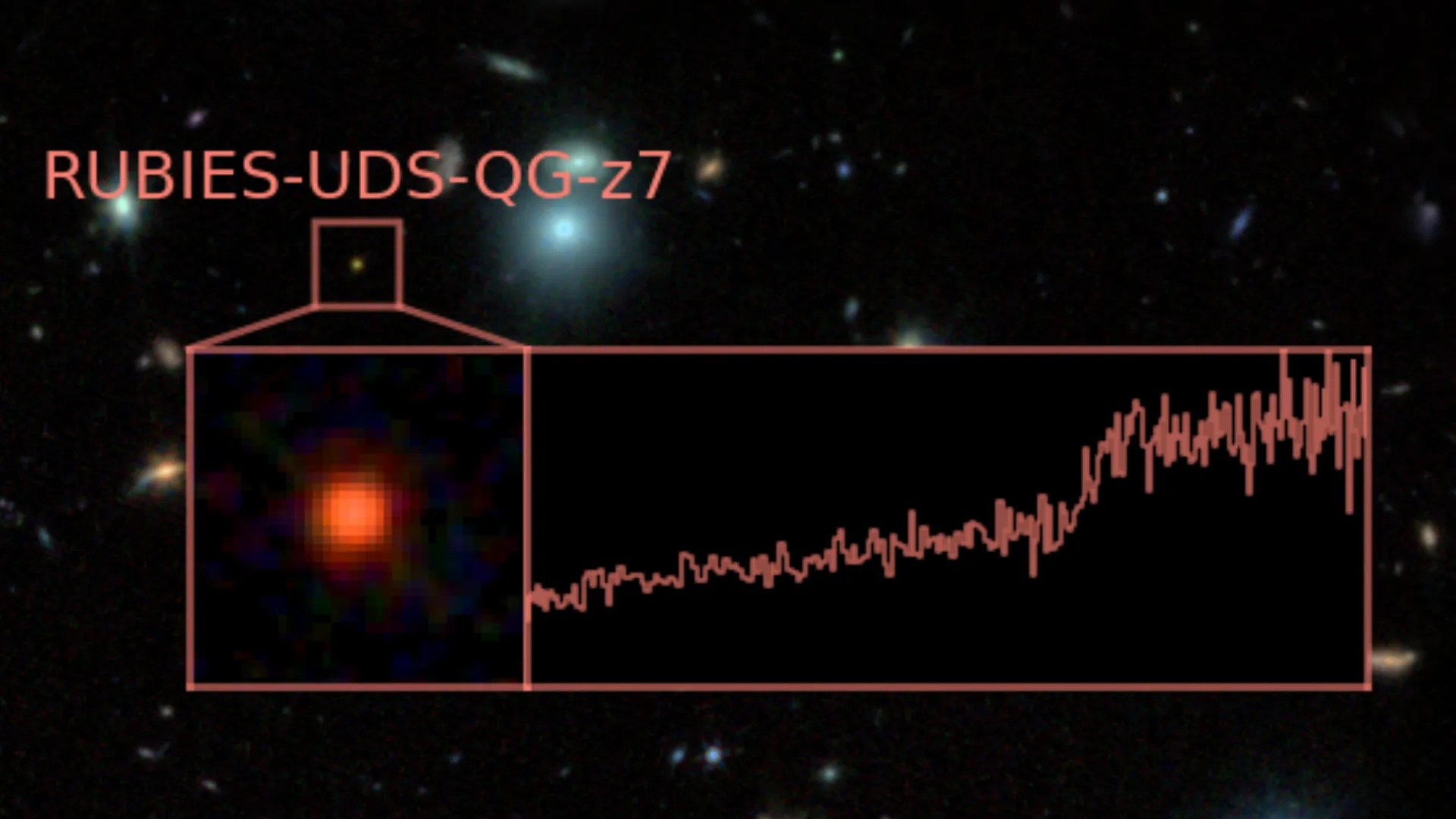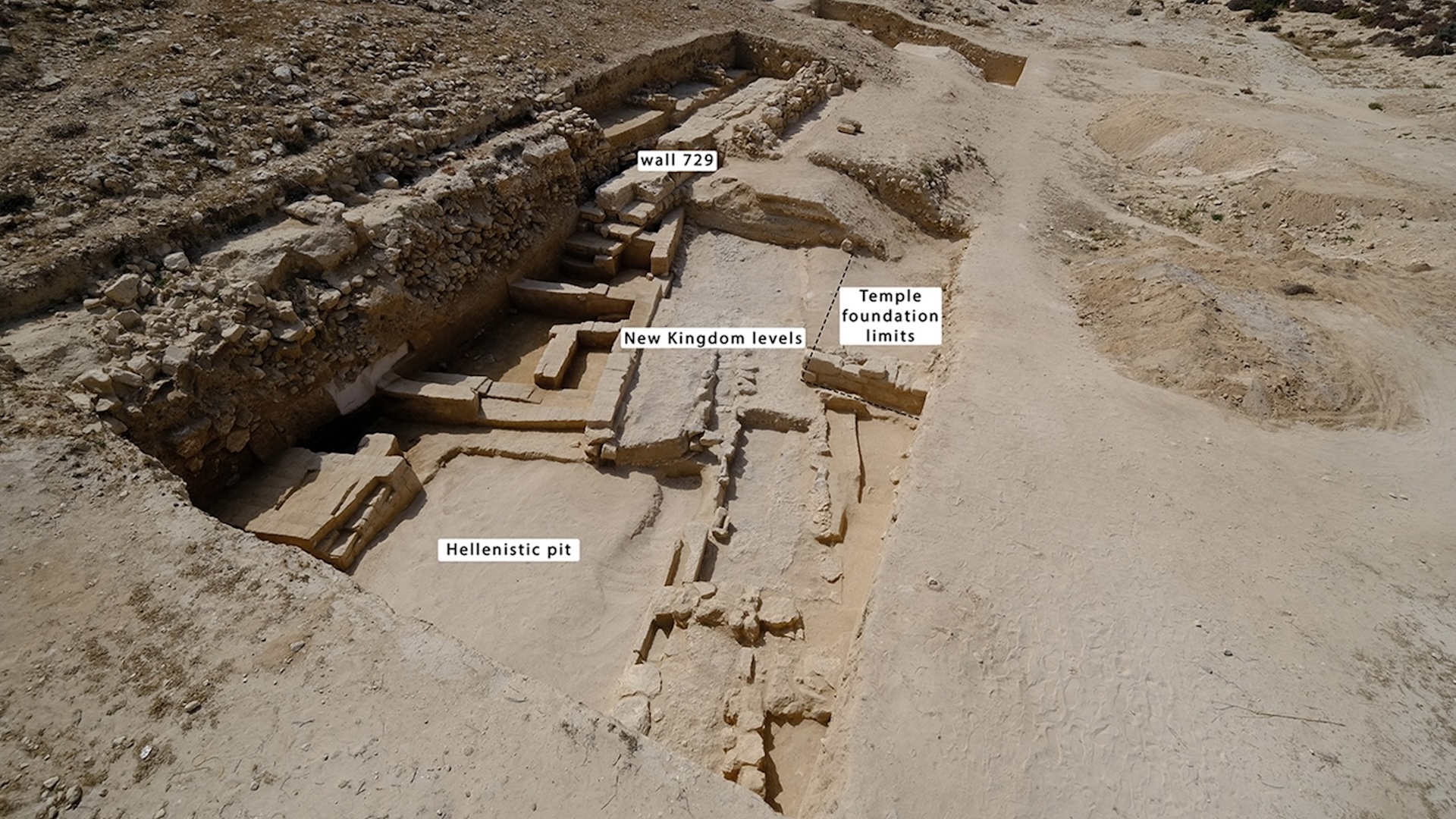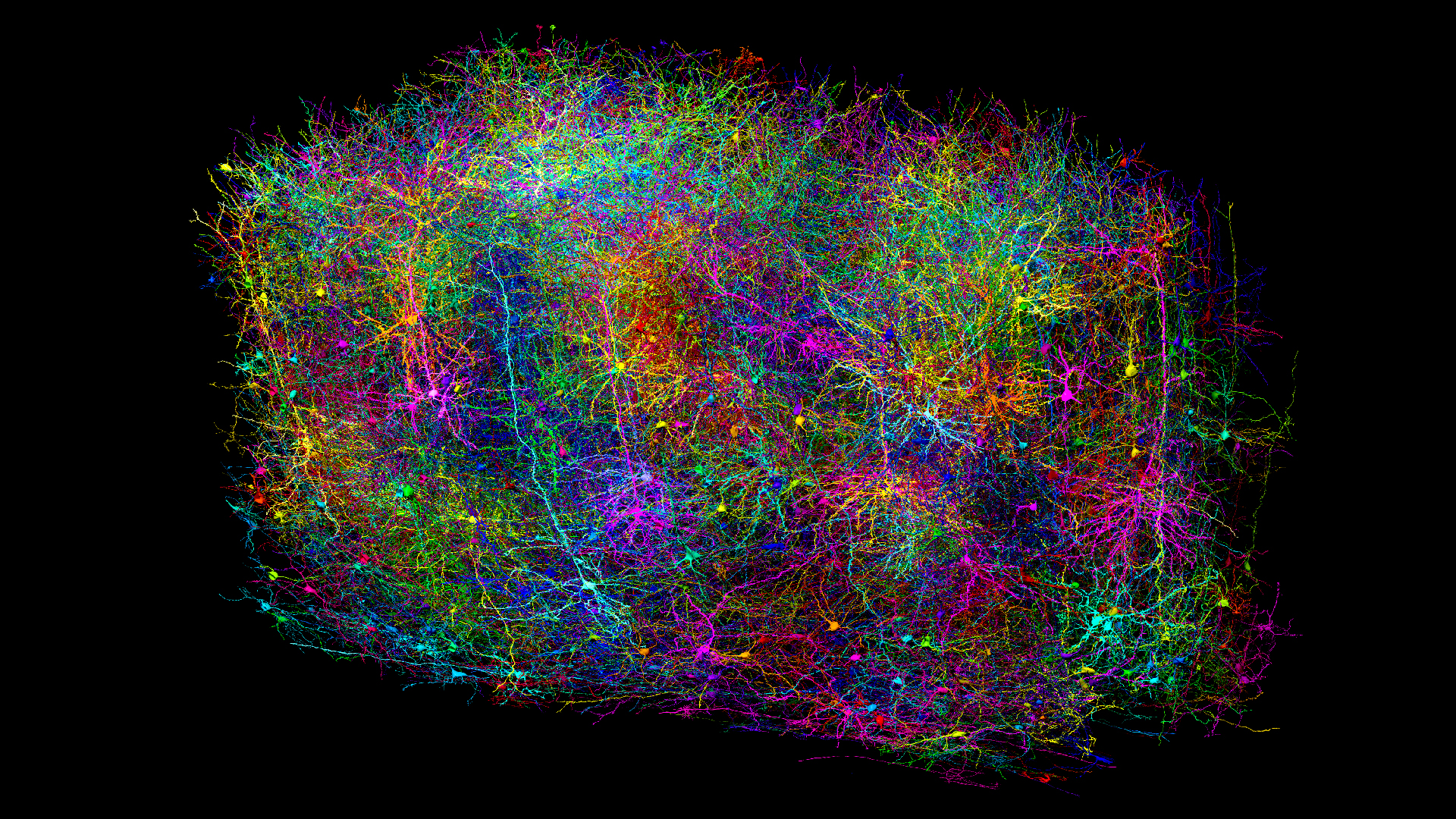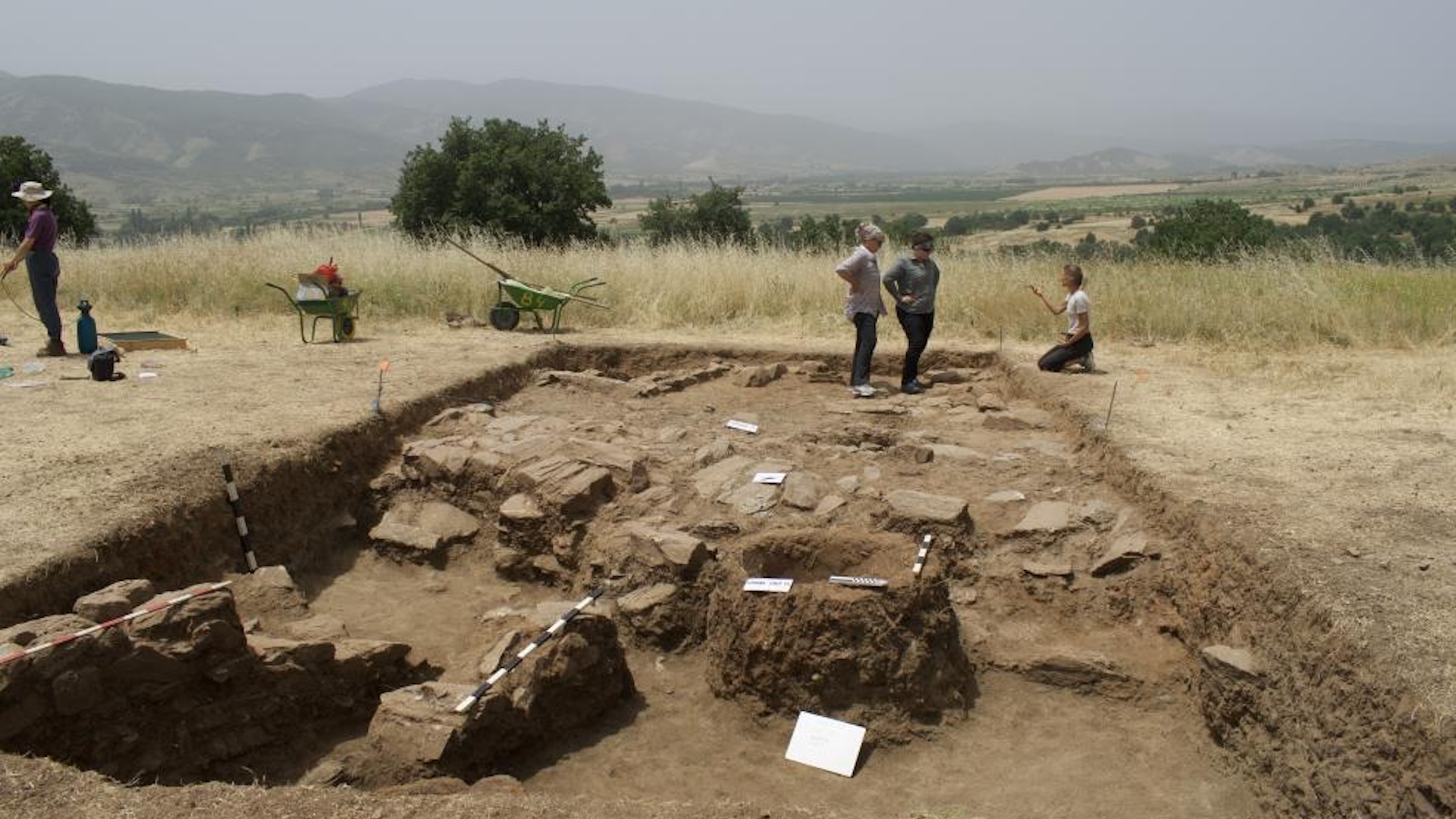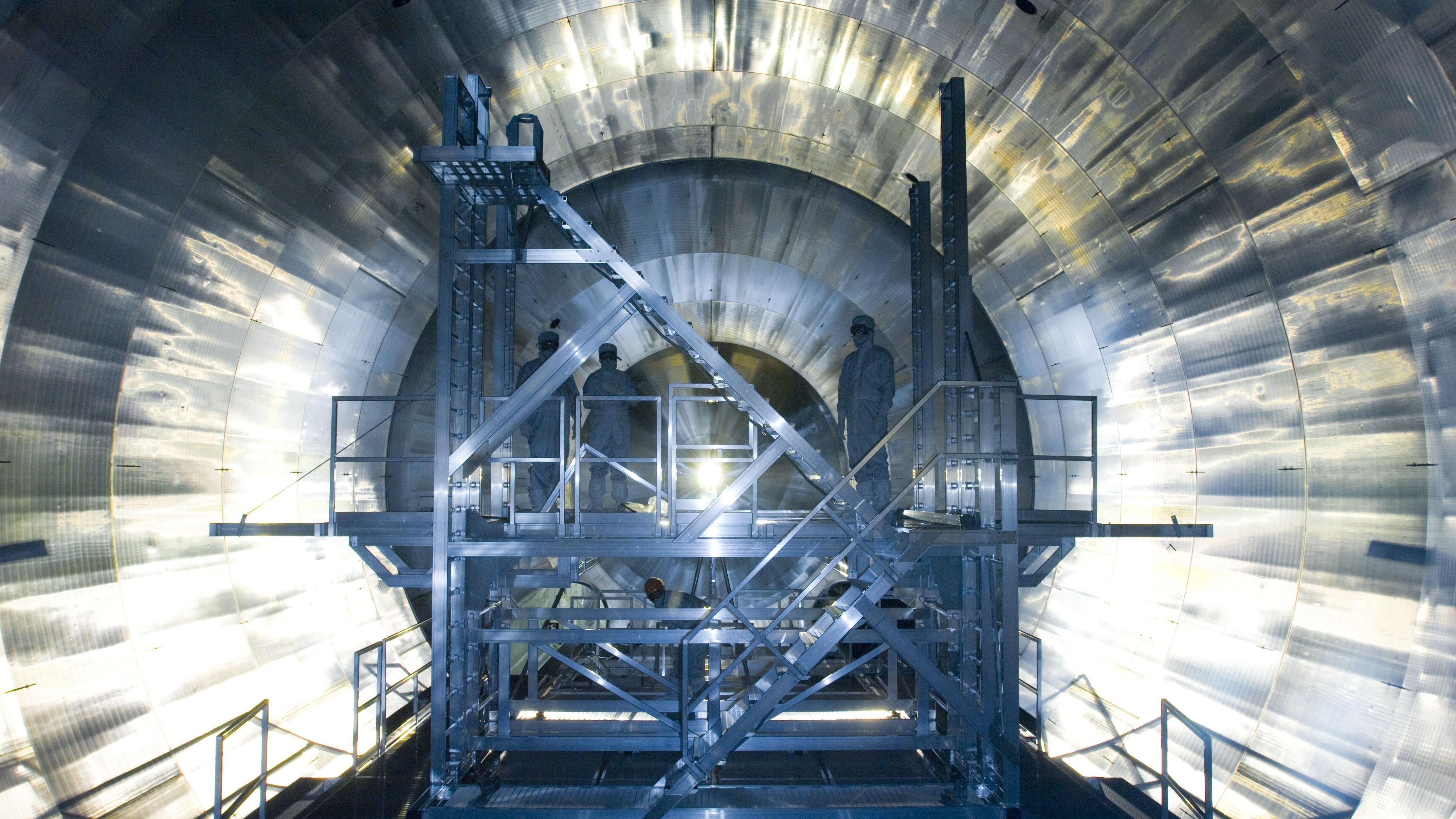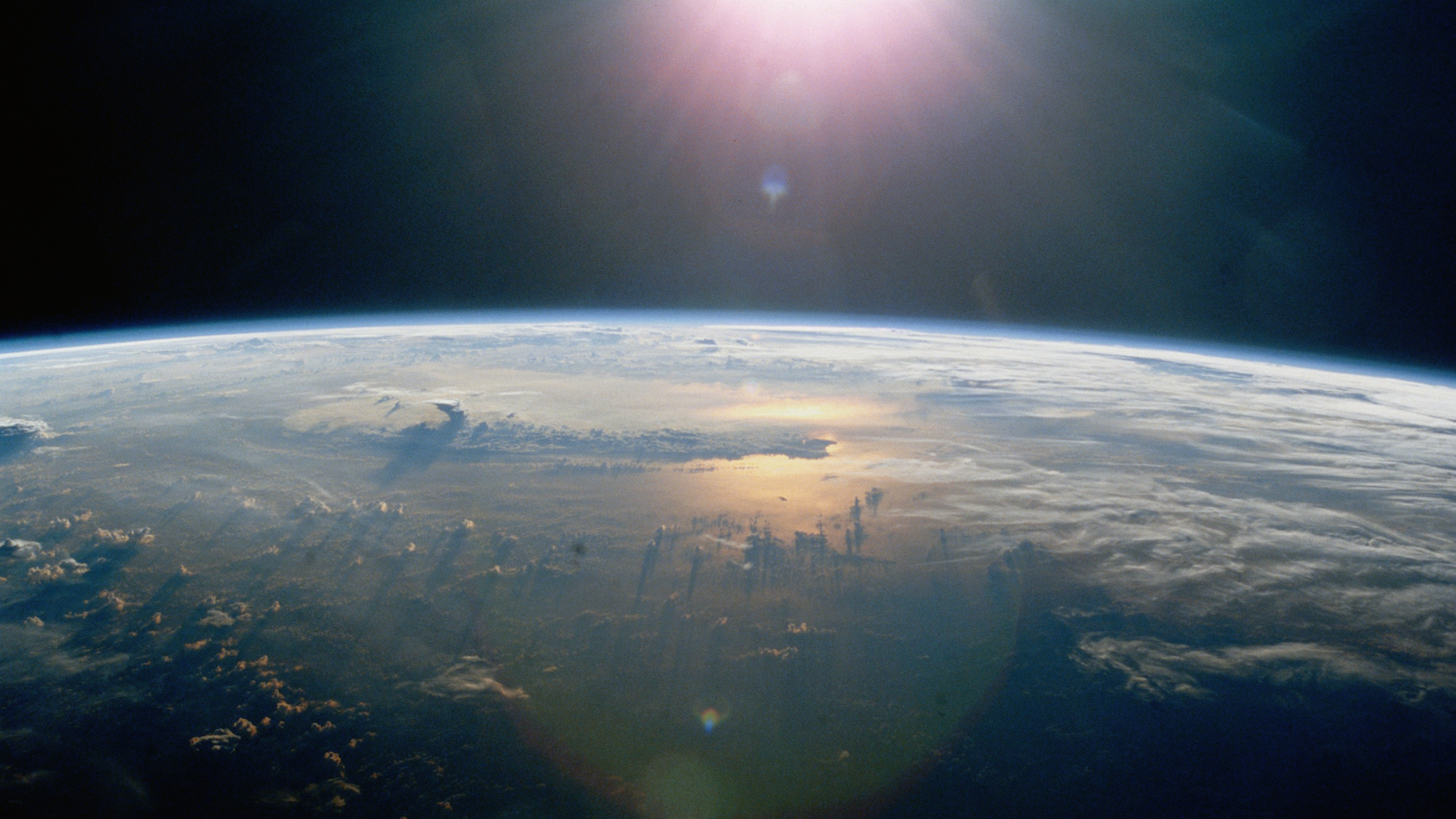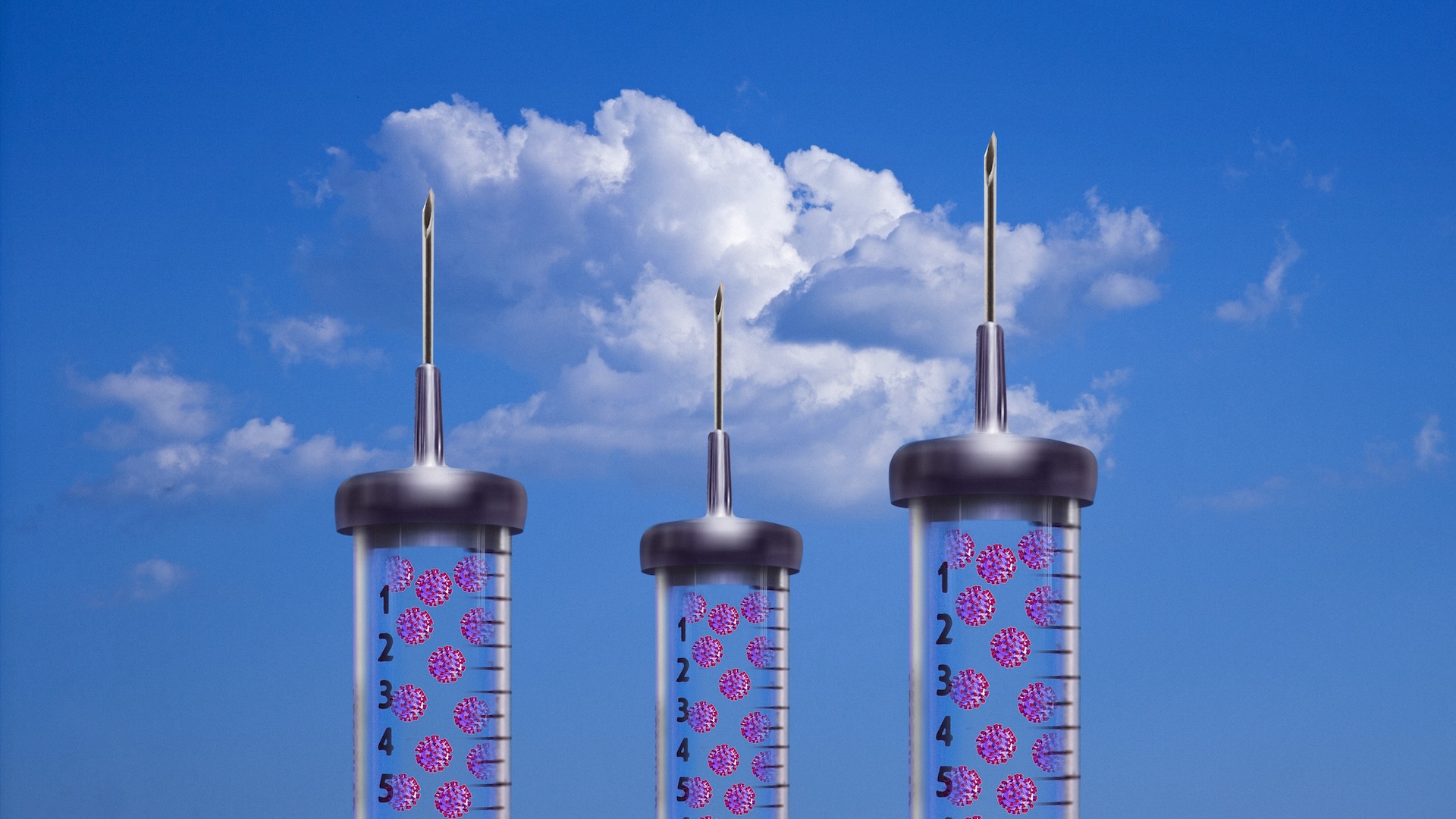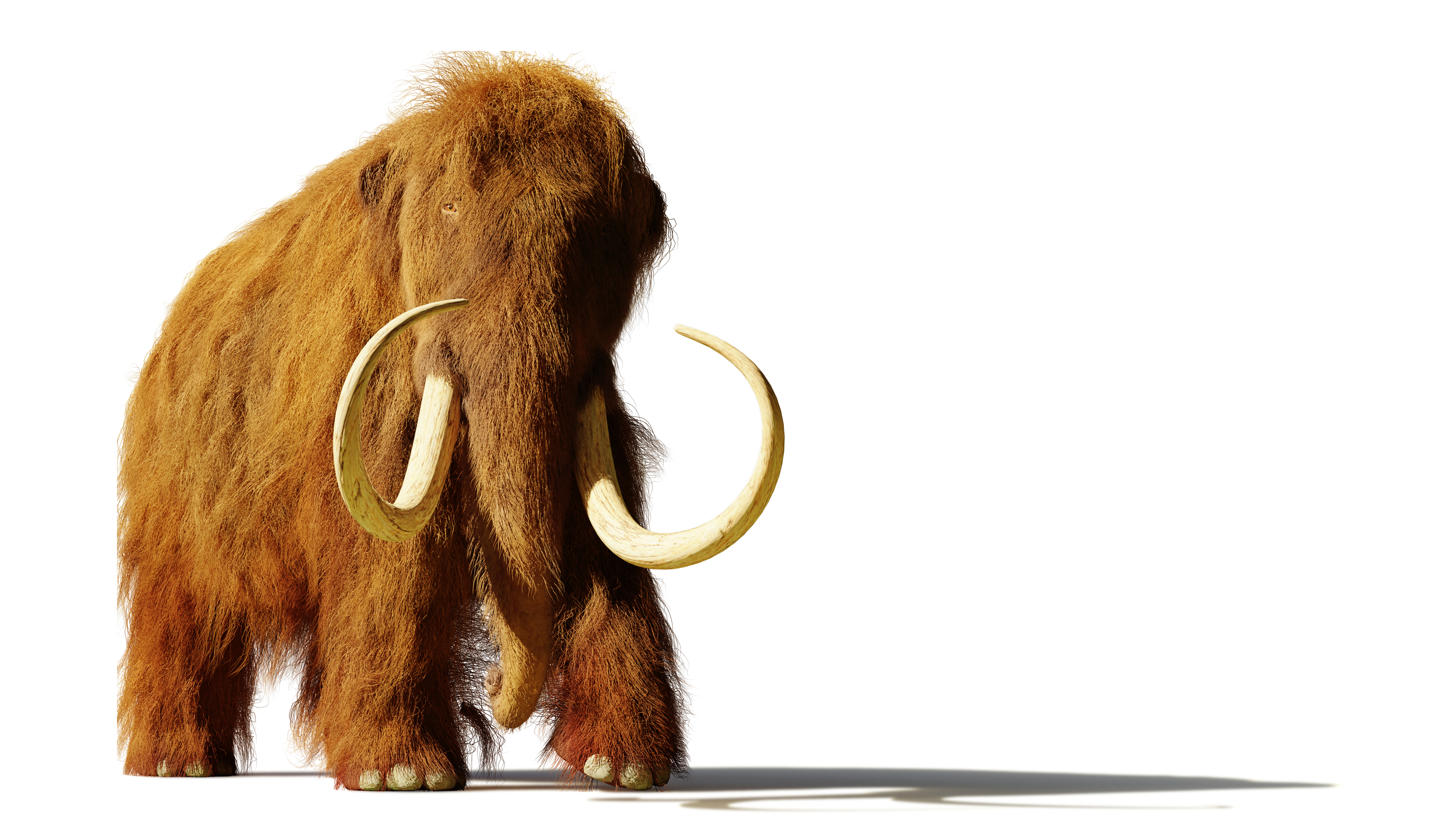Venus and the moon dance over the Eiffel Tower in stunning 'planetary parade' photo from Paris
A French astrophotographer has captured a stunning photo of Venus and the moon shining above the Eiffel Tower in Paris, thanks to a rare "parade of planets."
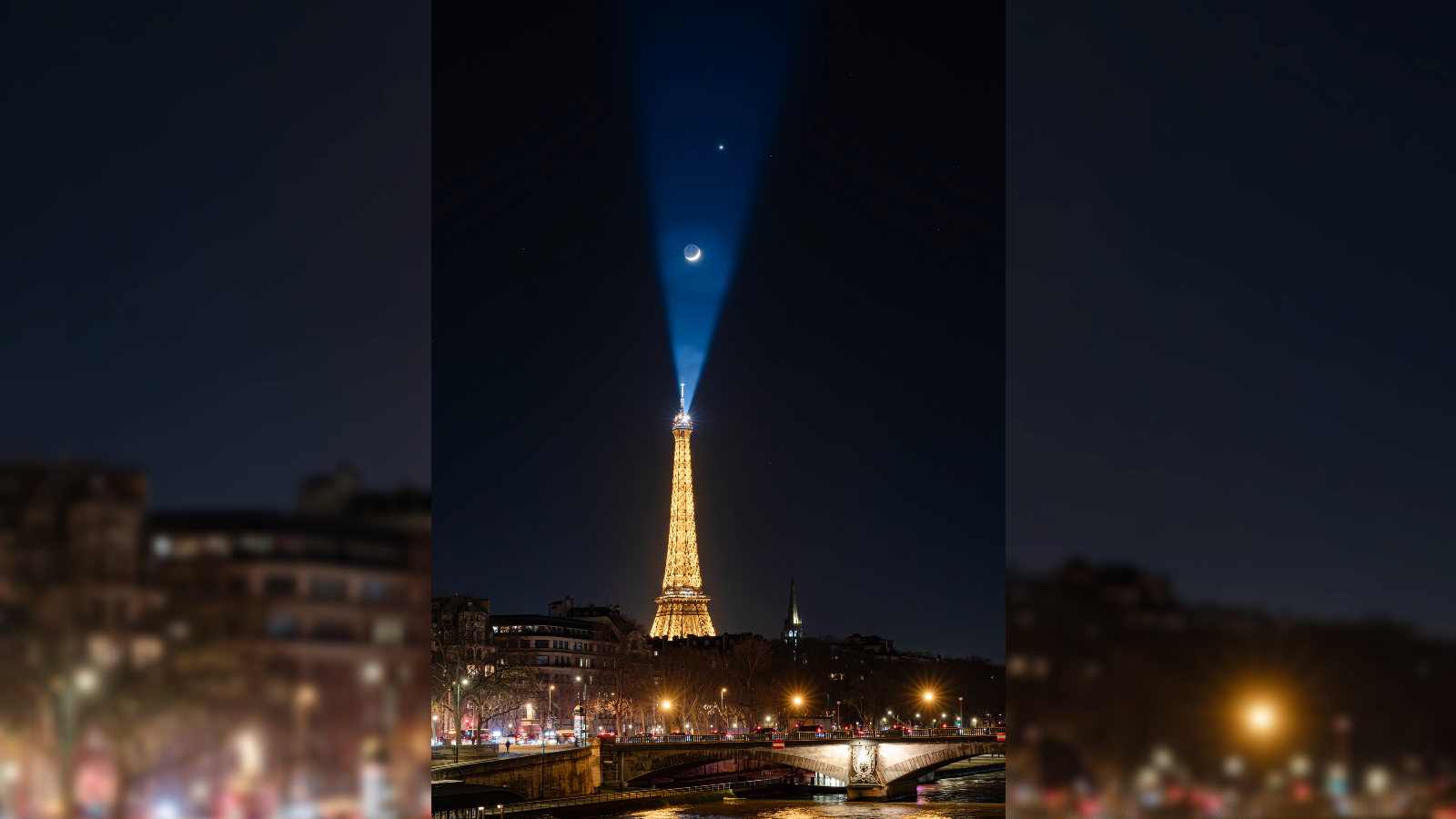
A striking new photo captures a colorful conjunction of Venus and the moon stealing the show in the night sky over Paris — even outshining competition from an iconic illuminated landmark. The incredible image is the result of a rare "parade of planets" that will peak later this month.
French astrophotographer Gwenaël Blanck took the stunning shot at around 8:00 p.m. local time on Feb. 1 from the banks of the Seine river. It shows a bright crescent moon and one of our closest planetary neighbors almost perfectly aligned with a beam of blue light shooting into the sky from the top of the Eiffel Tower.
"This is one of the rare celestial events that make people look up even under light-polluted skies," Blanck wrote on Instagram. "A lot of tourists and passers-by were admiring the scene while I was shooting."
Saturn is also visible in the image as a faint spot to the right of the Eiffel Tower. However, it was much harder to spot than the other celestial objects.
Related: Have all 8 planets ever aligned?
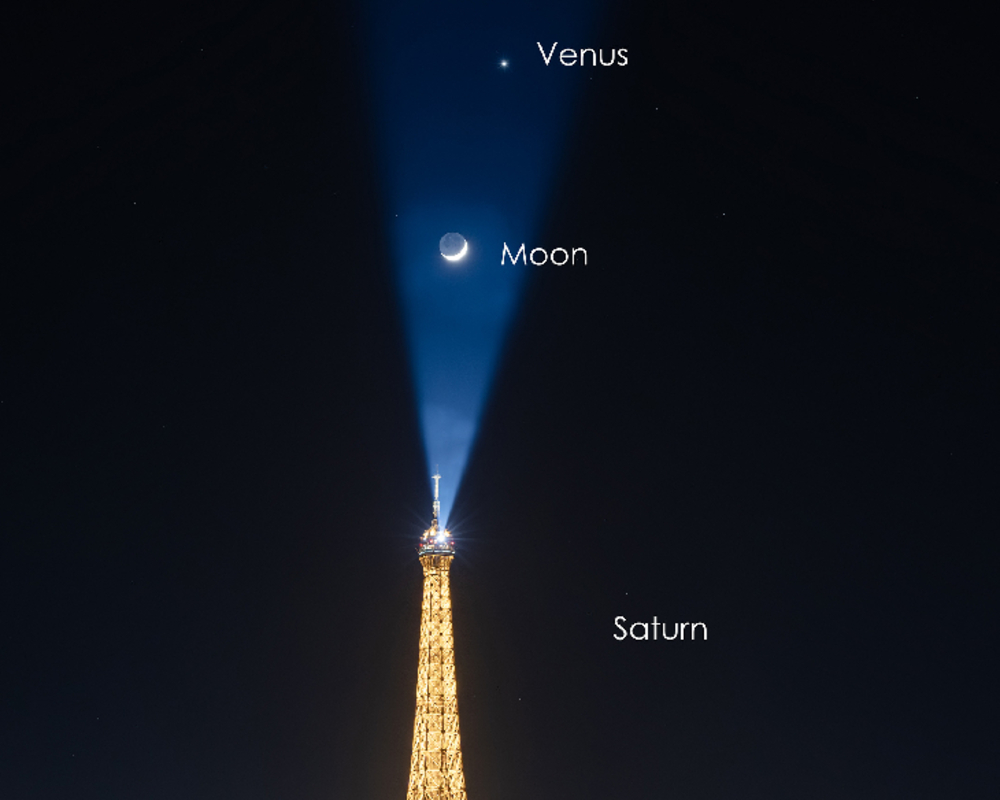
"The Moon (with a beautiful Earthshine) and Venus could not be missed, but Saturn was way more difficult to see, especially in the light pollution," Blanck wrote.
Earthshine is a phenomenon where the dark portions of the moon's Earth-facing side are illuminated by light reflecting off our planet. This mainly happens for a few days on either side of a new moon and is most clearly visible in the Northern Hemisphere in spring, according to NASA's Earth Observatory.
Sign up for the Live Science daily newsletter now
Get the world’s most fascinating discoveries delivered straight to your inbox.
Planetary parade
We are currently in the midst of one of the most impressive planetary alignment events in recent years. Under the right circumstances, five planets — Mercury, Venus, Mars, Jupiter and Saturn — will be visible to the naked eye over the next few weeks. The other two solar system worlds, Uranus and Neptune, are also present in the night sky but require a good telescope to see alongside their brighter neighbors.
The event has already delivered some special shots, including an alignment of six of the seven planets in late January, but the parade will not peak until late February and early March, when all seven planets will align in a near-straight line along the horizon, according to Live Science's sister site Space.com.
Venus will be the brightest planet in the night sky during this period and is located closest to the moon in the sky, making it easy to spot on most clear nights.
If you want to see the best of the planetary parade for yourself, we recommend using a decent telescope or a pair of stargazing binoculars.
The next time we will see a similar alignment of the planets will be October 2028.

Harry is a U.K.-based senior staff writer at Live Science. He studied marine biology at the University of Exeter before training to become a journalist. He covers a wide range of topics including space exploration, planetary science, space weather, climate change, animal behavior and paleontology. His recent work on the solar maximum won "best space submission" at the 2024 Aerospace Media Awards and was shortlisted in the "top scoop" category at the NCTJ Awards for Excellence in 2023. He also writes Live Science's weekly Earth from space series.
You must confirm your public display name before commenting
Please logout and then login again, you will then be prompted to enter your display name.
